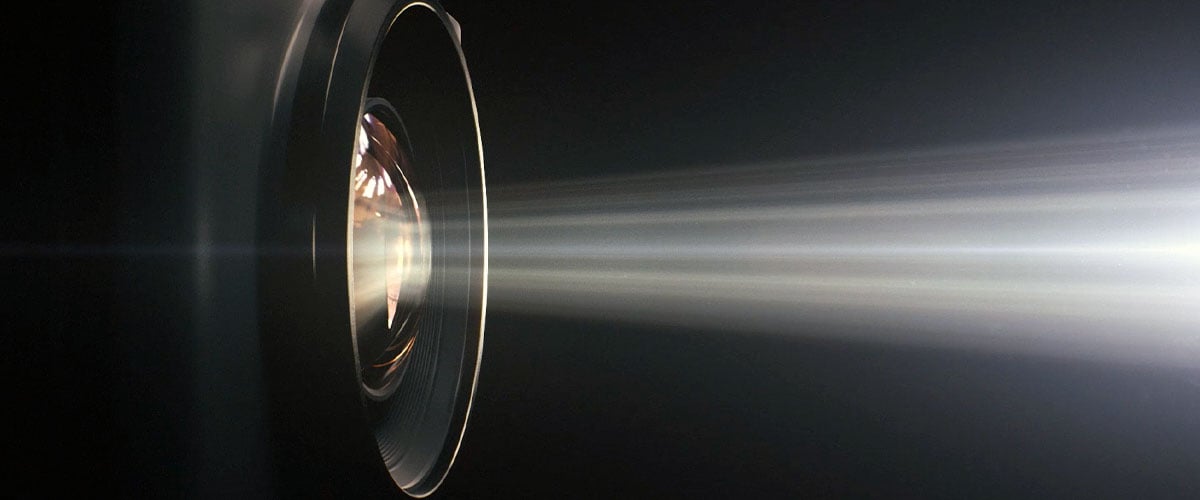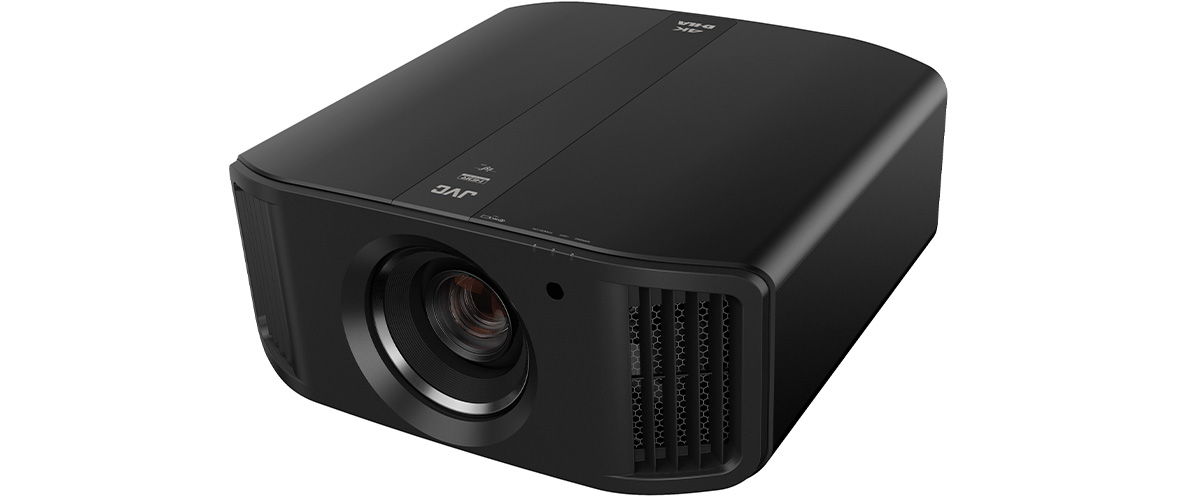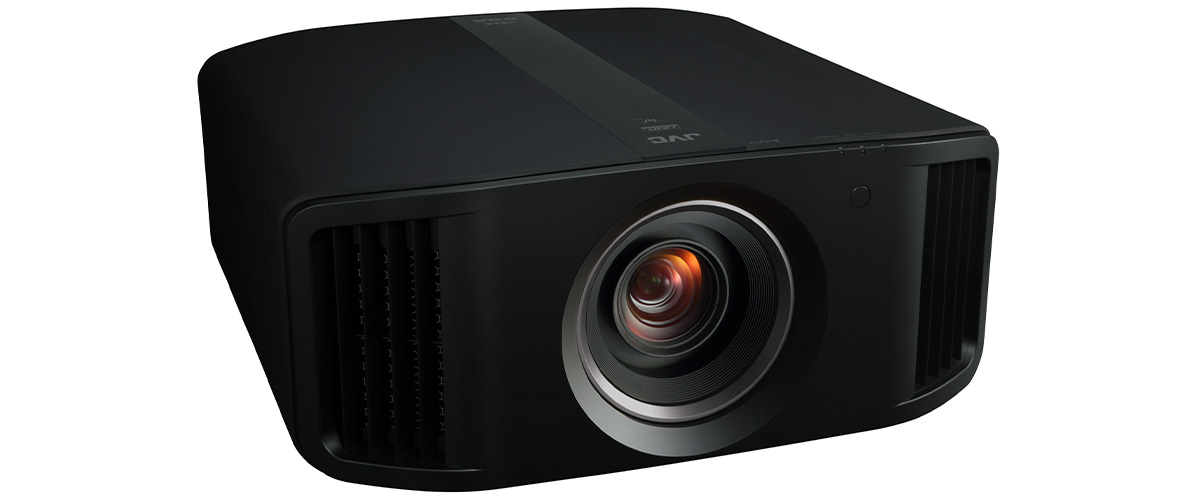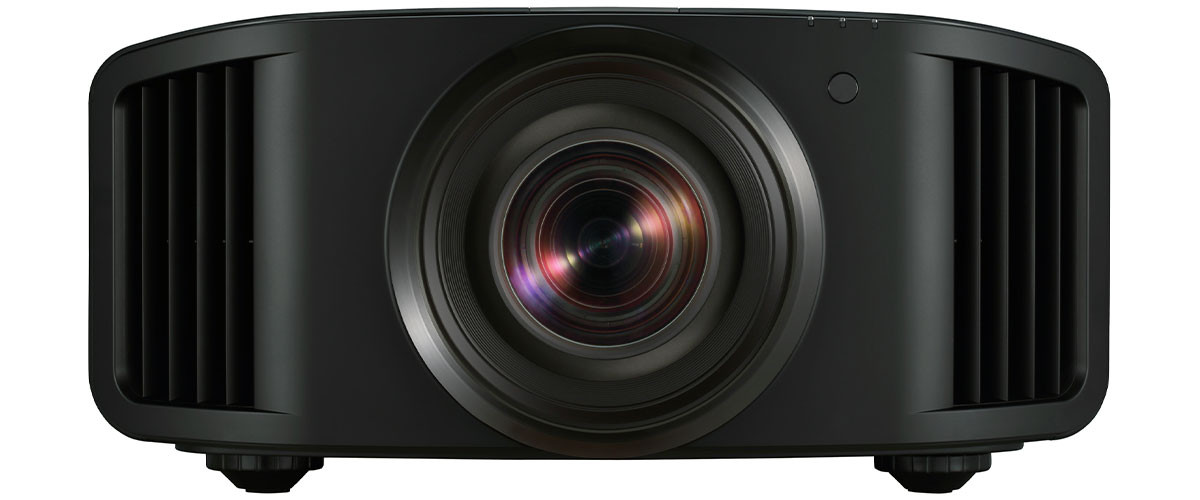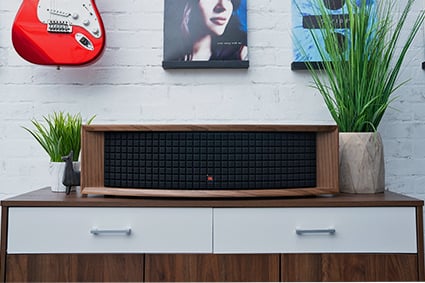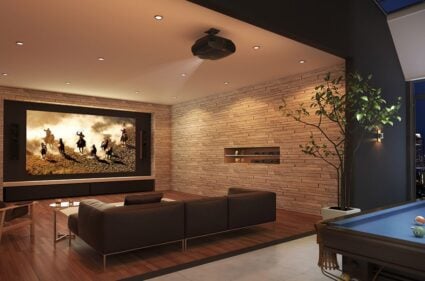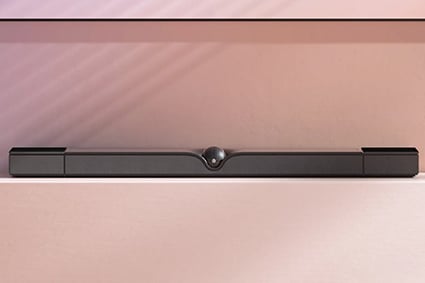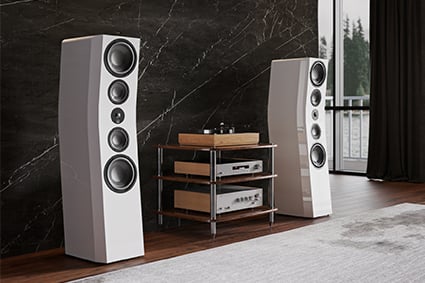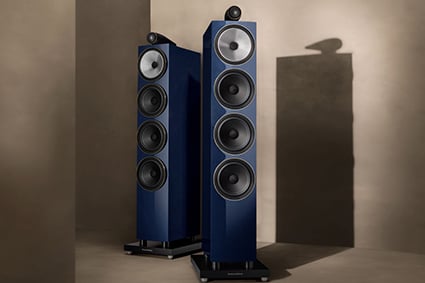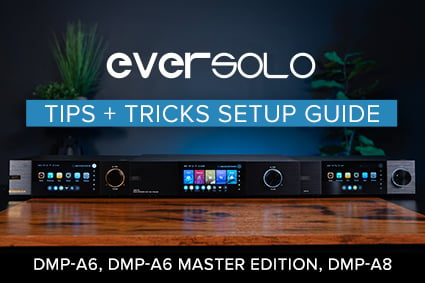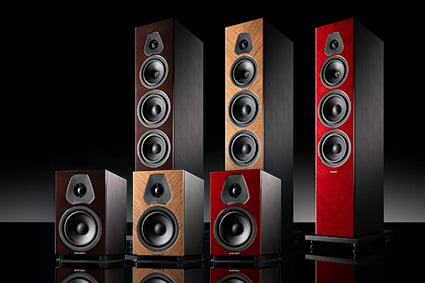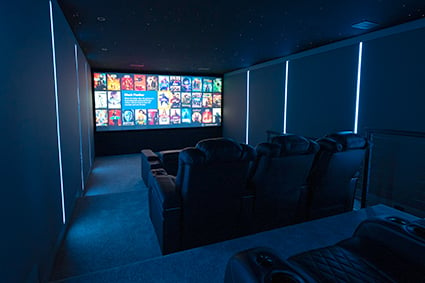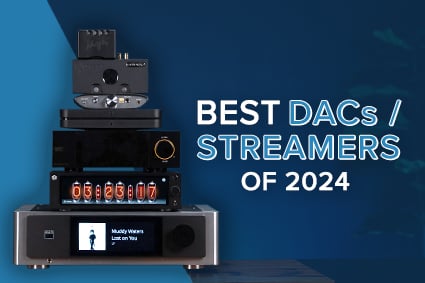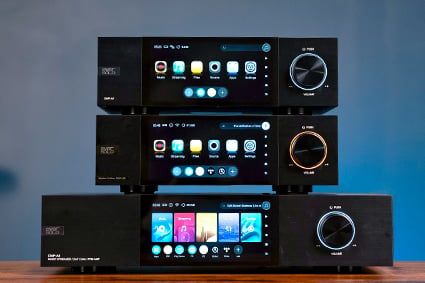|
 |
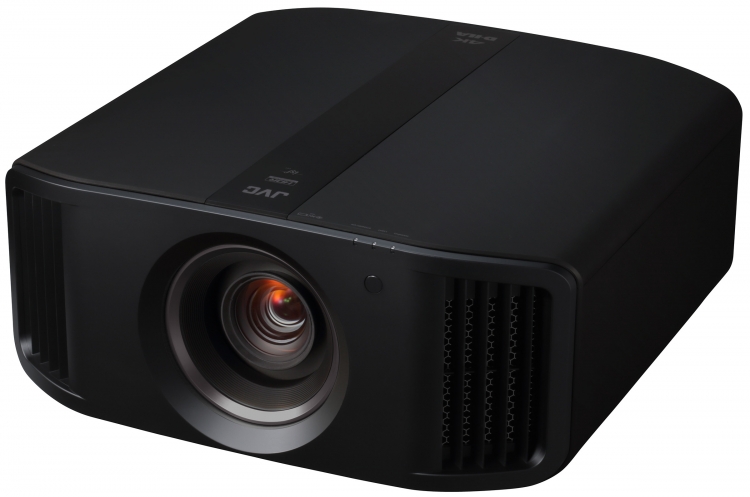 |
 |
| KEY FEATURES |
DLA-NX9B |
DLA-NX7B |
DLA-NX5B |
|
Complies with the latest HDMI/HDCP 2.2 standard to enable full spec 4K signal input with 18Gbps transmission band-width (4K60P 4:4:4, 4K60P 4:2:2/36-bit, 4K24P 4:4:4/36-bit) |
Complies with the latest HDMI/HDCP 2.2 standard to enable full spec 4K signal input with 18Gbps transmission band-width (4K60P 4:4:4, 4K60P 4:2:2/36-bit, 4K24P 4:4:4/36-bit) |
Complies with the latest HDMI/HDCP 2.2 standard to enable full spec 4K signal input with 18Gbps transmission band-width (4K60P 4:4:4, 4K60P 4:2:2/36-bit, 4K24P 4:4:4/36-bit) |
|
Light source: NSH 265 W lamp |
Light source: NSH 265 W lamp |
Light source: NSH 265 W lamp |
|
Resolution: 8192 x 4320 (with 8K/e-shift) |
Resolution: 4096 x 2160 |
Resolution: 4096 x 2160 |
|
Input connectors: HDMI x 2 (3D, Deep Color/HDCP 2.2) |
Input connectors: HDMI x 2 (3D, Deep Color/HDCP 2.2) |
Input connectors: HDMI x 2 (3D, Deep Color/HDCP 2.2) |
|
Output and control connectors: RS-232C (D-sub 9pin) x 1, LAN (RJ-45) x 1, Trigger x 1 (Mini jack), 3D Sync x 1 (Mini-DIN 3pin) |
Output and control connectors: RS-232C (D-sub 9pin) x 1, LAN (RJ-45) x 1, Trigger x 1 (Mini jack), 3D Sync x 1 (Mini-DIN 3pin) |
Output and control connectors: RS-232C (D-sub 9pin) x 1, LAN (RJ-45) x 1, Trigger x 1 (Mini jack), 3D Sync x 1 (Mini-DIN 3pin) |
|
3D formats: Frame Packing, Side-by-Side (Half), and Top and Bottom |
3D formats: Frame Packing, Side-by-Side (Half), and Top and Bottom |
3D formats: Frame Packing, Side-by-Side (Half), and Top and Bottom |
|
|
|
|
|
JVCs proprietary 8K/e-shift technology reproduces image quality beyond 4K** (The projector does not support 8K signal input) |
New 0.69 inch 4K D-ILA (4096 x 2160) device x 3 |
New 0.69 inch 4K D-ILA (4096 x 2160) device x 3 |
|
New 0.69-inch 4K D-ILA (4096 x 2160) device x 3 |
High-definition display at 4K resolution (4096 x 2160) |
High-definition display at 4K resolution (4096 x 2160) |
|
18-element, 16-group all-glass 100mm diameter high-quality lens |
17-element, 15-group all-glass 65mm diameter high-quality lens |
17-element, 15-group all-glass 65mm diameter high-quality lens |
|
Multiple Pixel Control image processor accurately reproduces images closer to the original |
Multiple Pixel Control image processor accurately reproduces images closer to the original |
Multiple Pixel Control image processor accurately reproduces images closer to the original |
|
High brightness of 2,200 lm provides vibrant and dynamic imagery |
Exceptionally bright 1,900 lm means bright, high-resolution images |
Exceptionally bright 1,800 lm means bright, high-resolution images |
|
Native Contrast Ratio of 100,000:1 translates to a spectacular Dynamic Contrast Ratio of 1,000,000:1 |
Deep Blacks are realized by a High Native Contrast Ratio of 80,000:1 (Dynamic Contrast Ratio 800,000:1) |
Deep Blacks are realized by a High Native Contrast Ratio of 40,000:1 (Dynamic Contrast Ratio 400,000:1) |
|
Wide Color Gamut above exceeds DCI/P3 spec creating saturated, beautiful images that come to life |
Wide Color Gamut above exceeds DCI/P3 spec creating saturated, beautiful images that come to life |
Compatible with HDR technology that dramatically improves image quality that rivals real life. |
|
Compatible with HDR technology that dramatically improves image quality that rivals real life. |
Compatible with HDR technology that dramatically improves image quality that rivals real life. |
Auto Tone Mapping function automatically adjusts settings for optimum HDR10 image quality |
|
Auto Tone Mapping function automatically adjusts settings for optimum HDR10 image quality |
Auto Tone Mapping function automatically adjusts settings for optimum HDR10 image quality |
For easy reproduction, the projector switches automatically to HDR picture mode when HDR10 signals are received |
|
For easy reproduction, the projector switches automatically to HDR picture mode when HDR10 signals are received |
For easy reproduction, the projector switches automatically to HDR picture mode when HDR10 signals are received |
Display the MaxCLL and MaxFALL mastering data available for HDR content on some UHD Blu-ray discs |
|
Display the MaxCLL and MaxFALL mastering data available for HDR content on some UHD Blu-ray discs |
Display the MaxCLL and MaxFALL mastering data available for HDR content on some UHD Blu-ray discs |
Compatible with Hybrid Log-Gamma that is expected to be used widely in future broadcasting |
|
Compatible with Hybrid Log-Gamma that is expected to be used widely in future broadcasting |
Compatible with Hybrid Log-Gamma that is expected to be used widely in future broadcasting |
Installation Mode centrally manage nine settings related to installation to enjoy video best suited for each environment |
|
Installation Mode centrally manage nine settings related to installation to enjoy video best suited for each environment |
Installation Mode centrally manage nine settings related to installation to enjoy video best suited for each environment |
Nine settings of Installation Mode include Lens Control, Pixel Adjustment, Mask, Anamorphic on or off, Screen Adjust, Installation Style, Keystone, Pincushion, and Aspect; stored installation modes for various environments can be called up. |
|
Nine settings of Installation Mode include Lens Control, Pixel Adjustment, Mask, Anamorphic on or off, Screen Adjust, Installation Style, Keystone, Pincushion, and Aspect; stored installation modes for various environments can be called up. |
Nine settings of Installation Mode include Lens Control, Pixel Adjustment, Mask, Anamorphic on or off, Screen Adjust, Installation Style, Keystone, Pincushion, and Aspect; stored installation modes for various environments can be called up. |
Renewed Clear Motion Drive supporting 4K60P (4:4:4) signal improves moving images more than ever |
|
Renewed Clear Motion Drive supporting 4K60P (4:4:4) signal improves moving images more than ever |
Renewed Clear Motion Drive supporting 4K60P (4:4:4) signal improves moving images more than ever |
Motion Enhance technology reduces residual images and blurring that are often found in fast-moving images by optimally controlling the drive of D-ILA devices |
|
Motion Enhance technology reduces residual images and blurring that are often found in fast-moving images by optimally controlling the drive of D-ILA devices |
Motion Enhance technology reduces residual images and blurring that are often found in fast-moving images by optimally controlling the drive of D-ILA devices |
Low Latency Mode suppresses display delay for faster response when receiving signals from PC and game consoles |
|
Low Latency Mode suppresses display delay for faster response when receiving signals from PC and game consoles |
Low Latency Mode suppresses display delay for faster response when receiving signals from PC and game consoles |
Color Management System with 6-axis Matrix |
|
Color Management System with 6-axis Matrix |
Color Management System with 6-axis Matrix |
Auto-Calibration Function using an optical sensor* is capable of optimizing essential elements in the image, including color balance, gamma characteristics, color space and color tracking |
|
Auto-Calibration Function using an optical sensor* is capable of optimizing essential elements in the image, including color balance, gamma characteristics, color space and color tracking |
Auto-Calibration Function using an optical sensor* is capable of optimizing essential elements in the image, including color balance, gamma characteristics, color space and color tracking |
|
|
THX 4K Display Certification to ensure the precise reproduction of picture quality in 4K content, just as the original filmmaker envisioned. |
|
|
|
ISF C3 (Certified Calibration Controls) mode** to reproduce excellent picture quality optimized for specific environments. |
ISF C3 (Certified Calibration Controls) mode** to reproduce excellent picture quality optimized for specific environments. |
ISF C3 (Certified Calibration Controls) mode** to reproduce excellent picture quality optimized for specific environments. |
|
Wireless transmission options for 3D viewing: RF (radio frequency) system transmission with PK-AG3 3D Glasses for 100H continuous operation and PK-EM2 3D Synchro Emitter
*Exclusive JVC software installed in PC and optical sensor are required. Please visit the JVC website for details. **Professional calibration to desired screen is performed by trained dealers |
Wireless transmission options for 3D viewing: RF (radio frequency) system transmission with PK-AG3 3D Glasses for 100H continuous operation and PK-EM2 3D Synchro Emitter
*Exclusive JVC software installed in PC and optical sensor are required. Please visit the JVC website for details. **Professional calibration to desired screen is performed by trained dealers |
Wireless transmission options for 3D viewing: RF (radio frequency) system transmission with PK-AG3 3D Glasses for 100H continuous operation and PK-EM2 3D Synchro Emitter
*Exclusive JVC software installed in PC and optical sensor are required. Please visit the JVC website for details. **Professional calibration to desired screen is performed by trained dealers |



